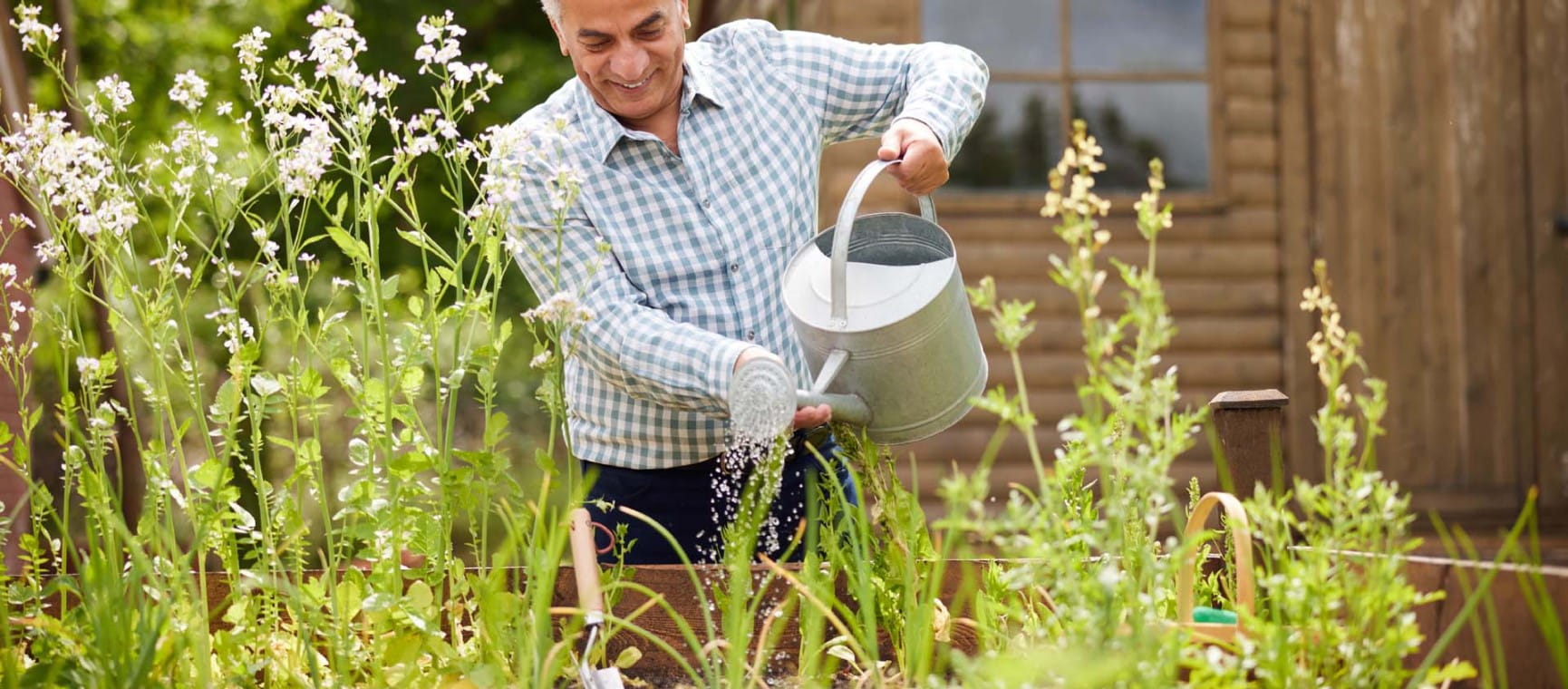
Sprawling plant beds abundant with flowers are a delight.
But boy, do they take a lot of looking after, not to mention physical effort, as you crawl on your hands and knees to get to pesky weeds or cut back shrubs.
Have you been considering scaling back your garden activities? Or are you keen to get a low-maintenance planting project on the go? Perhaps you just want to organise your garden into more distinct sections.
Raised beds keep all the things you love to do outside – whether that’s tending a no-dig vegetable garden or attracting insects with your flowers – within easy reach.
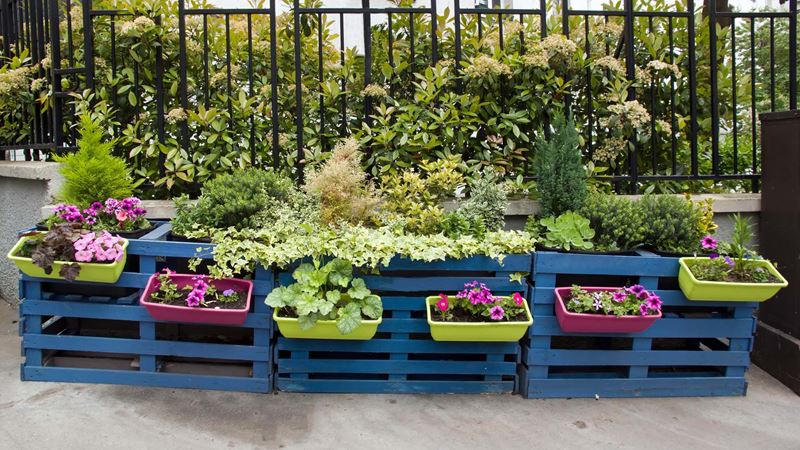
We have 15 raised bed garden ideas that could inspire you to transform your garden, balcony, courtyard, or even the most awkward, tough-to-love space in your backyard, for the better.
Your raised beds don’t have to just be planters. Their design can incorporate seating, or even a water feature. Lee Burkhill's award-winning ‘Fancy a Brew? Take a Pew’ design does just that. (If you love watching how-to gardening videos, check out Burkhill's YouTube channel Garden Ninja).

Being able to sit comfortably at the raised bed not only provides a mindful moment in the garden, but also makes lighter work of tending the plants within.
Raised beds can add foliage and colour to snug, paved spaces. Adding trellises to either end of a secluded walkway created by a group of planters can create the feel of a secret garden in dappled sunlight.

In this stunning garden, owned by Victoria Magrath of InTheFrow, the raised beds add perspective and depth, while the planting softens a hard-surfaced canvas.
One of the wonders of a raised bed is that it offers free-draining soil. That creates an ideal environment for drought-resistant plants, which benefit from good moisture retention in their foliage and stems.
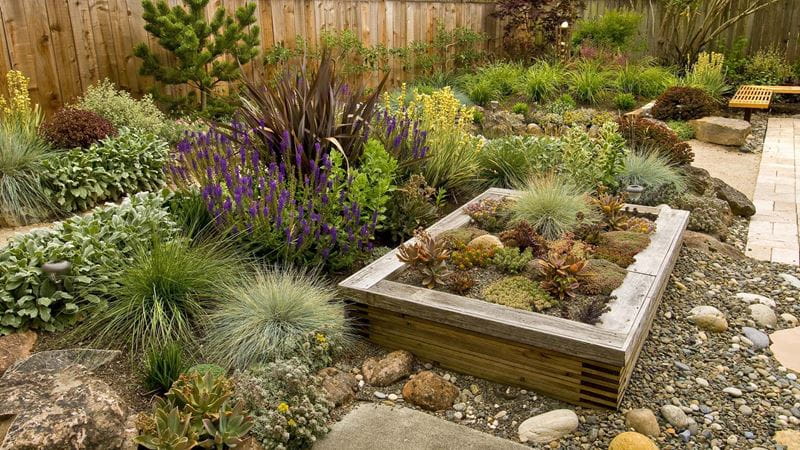
If you don’t want to worry too much about watering your plants during a summer heatwave , then a bed brimming with fuss-free plants, such as ornamental grasses and outdoor succulents, are ideal.
Keep an eye on them during very heavy rain and cover with tarp or plastic if you find the soil becoming waterlogged during a period of bad weather (particularly if you have compacted ground beneath).
Do plants in a raised bed garden need to be watered differently?
Raised beds typically drain much more easily. So, you’ll need to keep an eye on watering needs of various plants as they might differ to what you’d expect at ground level.
Creating deeper beds means roots can get longer and require slightly less watering, as Burkhill explains. “Ensure that you use a deep, peat-free compost mulch in any raised bed when planting,” he tells us.
“This helps retain moisture, suppresses weeds and gives a long-term feed to your plants. It's the easiest way to reduce maintenance and watering needs.”
He warns that building a raised bed on compacted ground can lead to ‘wet bed’. If your bed is going on top of grouted flagstones or tarmac, it might be best to break up the surface to create drainage. Un-grouted paving slabs, Burkhill notes, will likely already allow for water to drain away.
The structure of this metal planter means it can also double up as an instant raised bed. It's ideal for a balcony or small courtyard garden, and easy to install as there’s no building required.
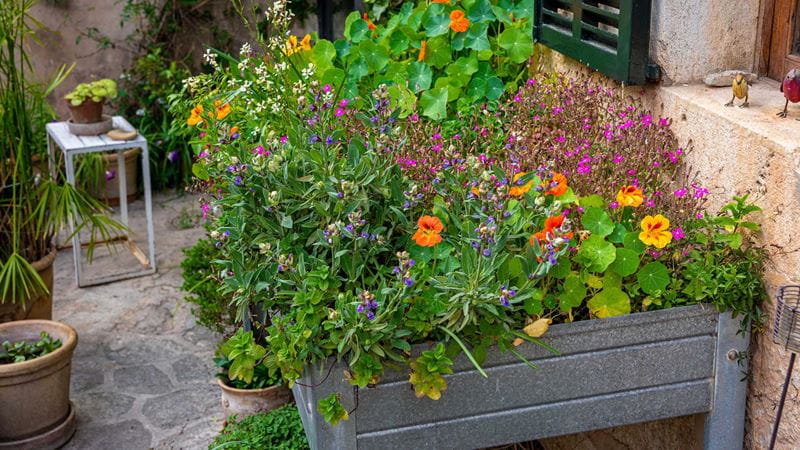
If you’re able to attach wheels to a similar style of planter, or you have people around that could help you manoeuvre it, this could be moved around a small garden to ensure maximum sun exposure.

Add an extra small, raised bed for the tiniest gardeners in your family. This is a nice idea if you have grandchildren, or any other children who might visit your house.
A miniature version of a raised bed will mean they have their own dedicated space w ithin easy reach and can cultivate their own growing projects.
If you ’re limited on space, but want raised beds that can be home to a range of plants with different root depths, then a tiered option will suit best. This one’s for all the DIY enthusiasts , though there are ready-made designs available.

Avoid lengthy allotment waiting lists and get your grow on in your back garden. Raised beds are an excellent solution for growing edibles at home.
Even people with balconies can become accomplished kitchen gardeners in no time at all. And as above, a tiered design can be useful for fruit and veggies that need a bit more room for longer root systems, according to plant experts GrowIt, BuildIt.
You don’t necessarily need to be a DIY buff to create a tiered, raised bed patio from scratch. A similar effect can be achieved using separate, readymade planters that can be placed together.

This will also be useful if you have any awkwardly shaped spaces you want to brighten up with foliage. You can play around with different angles and heights of your planter group until your heart’s content.
This is also a great idea if you are renting a property and/or planning a move soon. The individual beds are easy enough to transport separately, and can be reconfigured to suit their next location.
Now, we may not all have shabby chic stone ruins in our garden to make a raised bed statement with. But that doesn’t mean you can’t let your inner architect shine.
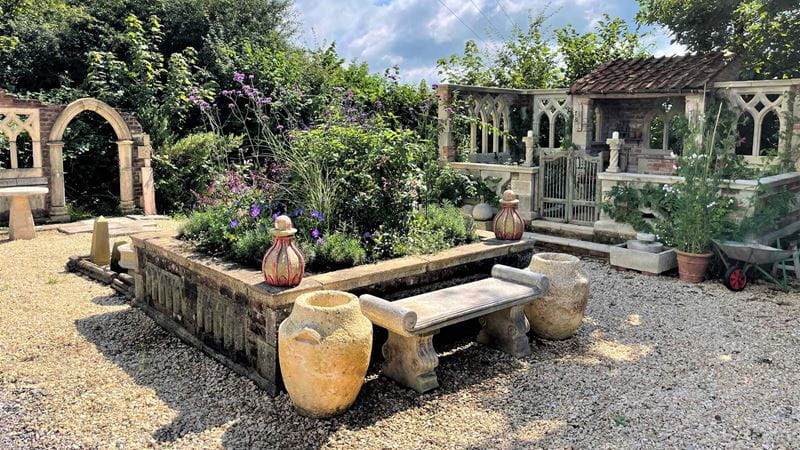
Use stone to make your raised beds – whether that’s natural rock, foraged materials or leftover elements from a building project. This could be placed centre stage to create a focal point for the garden, or take over a corner for a more natural, ‘carved out of the earth’ look.
If you get a kick of out being neat and tidy and want your garden to reflect your organised home, then how about this grid-style raised bed garden idea? Keeping all your vegetables growing separately could be useful if there’s someone in your household with a particular allergy.
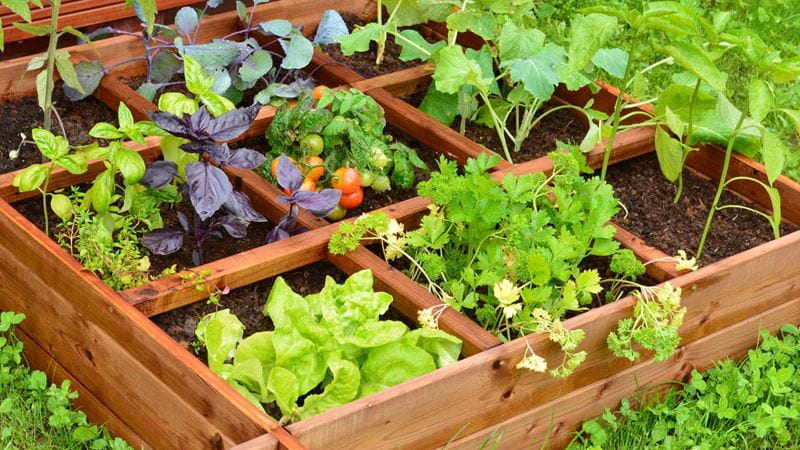
Standalone raised beds are an excellent way to utilise an unloved corner or awkward space. This works particularly well with a corner-shaped raised bed.
Corners can be notoriously tricky to make appealing, with many becoming places to store odds and ends, or merely collecting leaves and debris. No matter if it’s dark or sunny, there will be a plant that can happily thrive in a raised bed in a sheltered corner.
You’d never know what it was concealing beneath.
Here's a raised bed garden idea if you love spending time outside entertaining friends and family, but don’t necessarily love fussing over flowers.
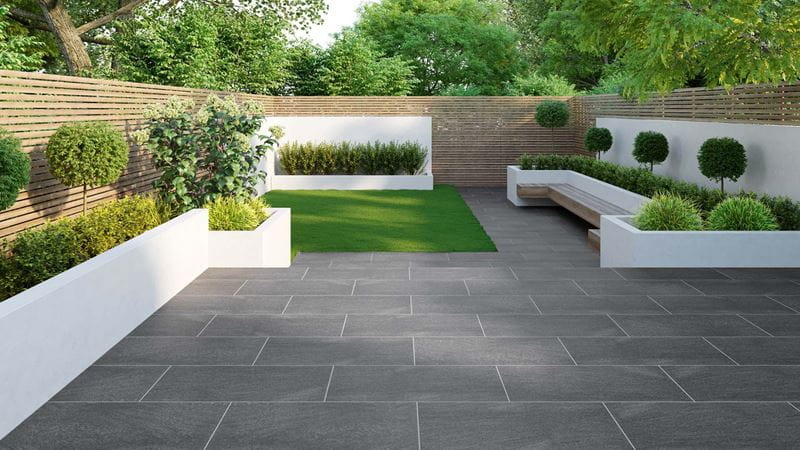
These low-maintenance raised beds are a masterclass in clean lines and simple planting options. Aside from some occasional trimming and topiary, these raised beds more or less will look after themselves, giving you more time to lavish your guests with attention instead.
One way to create them is by rendering breeze blocks.
All aboard! It’s time to let your wildest ideas set sail. Okay, so you might not have an old rowing boat lying around to reimagine as a raised bed garden with a lick of paint.
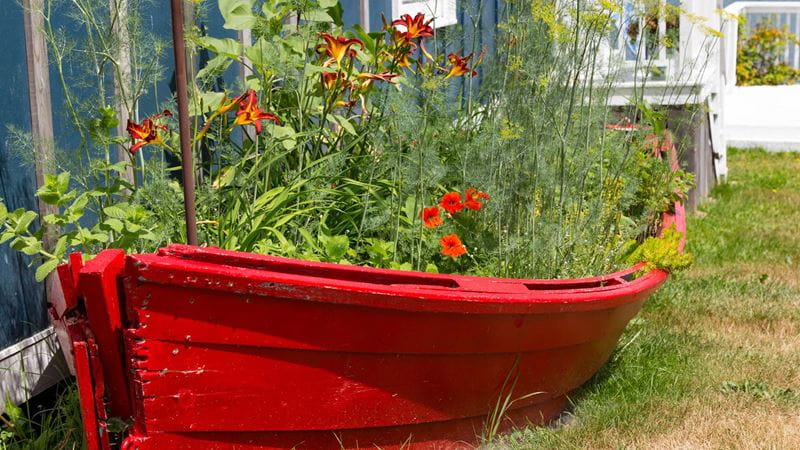
But for gardeners who find it impossible to throw anything away, think creatively about what you can re-purpose into a raised bed. Sustainable actions and zero-waste intentions shine even brighter when they tell a story, and a boat in your backyard will surely be a talking point for anyone that can spot it from their fence or window.
Railway sleepers are a wonderful, chunky alternative to timber planks. Their sturdy nature means they automatically double up as a place to perch.
There has been some concern over older, repurposed railway sleepers containing a chemical called creosote. Creosote has associated risks with regular skin contact, and its use is now prohibited . Though new sleepers are treated with other preservatives now, the RHS advises gardeners with raised beds made using older sleepers to wear protective covering and gloves.
Gardeners should always be aware of the risk that wood treatment chemicals used for raised beds could leach into soil containing plants you intend to eat, so it's worth doing your research to find which treatment is right for your crop.
"Using wood treatment on sleepers will help to prevent rot, insect infestation and mould as well as enhancing their water-resistance capabilities and visual appeal," says Cindy Tsui, B&Q's buyer for landscaping.
"For softwood sleepers, the most common treatment method is pressure treatment. A chemical solution is forced deep into the timber fibres, giving lasting protection against decay. Whereas, some tropical hardwoods do not require such treatment as they are naturally more resilient.”
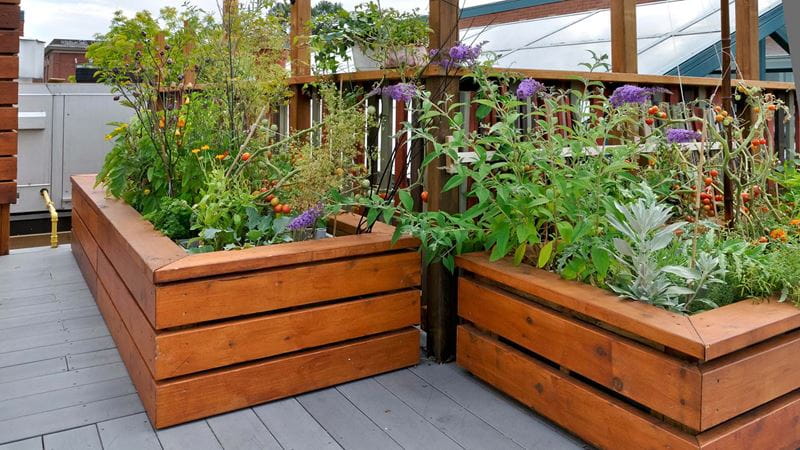
Though domestic roof terraces aren’t commonplace in the UK, if you have a holiday home overseas, it may well have a sun terrace.
Any raised beds installed on a rooftop patio are in prime position to soak up all of that wonderful sunshine for crops that will thrive in that particular climate. Raised bed gardens are well suited to hard-floor landscaping, so can easily be added alongside seating to create the foundations of a relaxing rooftop oasis.
Rosanna Spence has been a journalist for 10 years, reporting on a huge array of topics – from microwaves to cocktails, sustainable buildings, the Caribbean islands and beyond. She’s interviewed chefs at the helm of Michelin-starred restaurants and chatted to countless CEOs about their businesses, as well as created travel guides for experienced travellers seeking life-changing adventures. Throughout her career, she has created content for Business Traveller, i-escape.com, Pub & Bar, BRITA, Dine Out and many more leading titles and brands.
View author page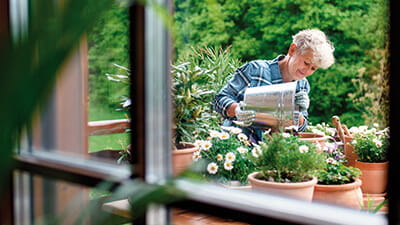

Saga Home Insurance comes with garden cover included. Find out what’s included and get tips to help secure your garden.
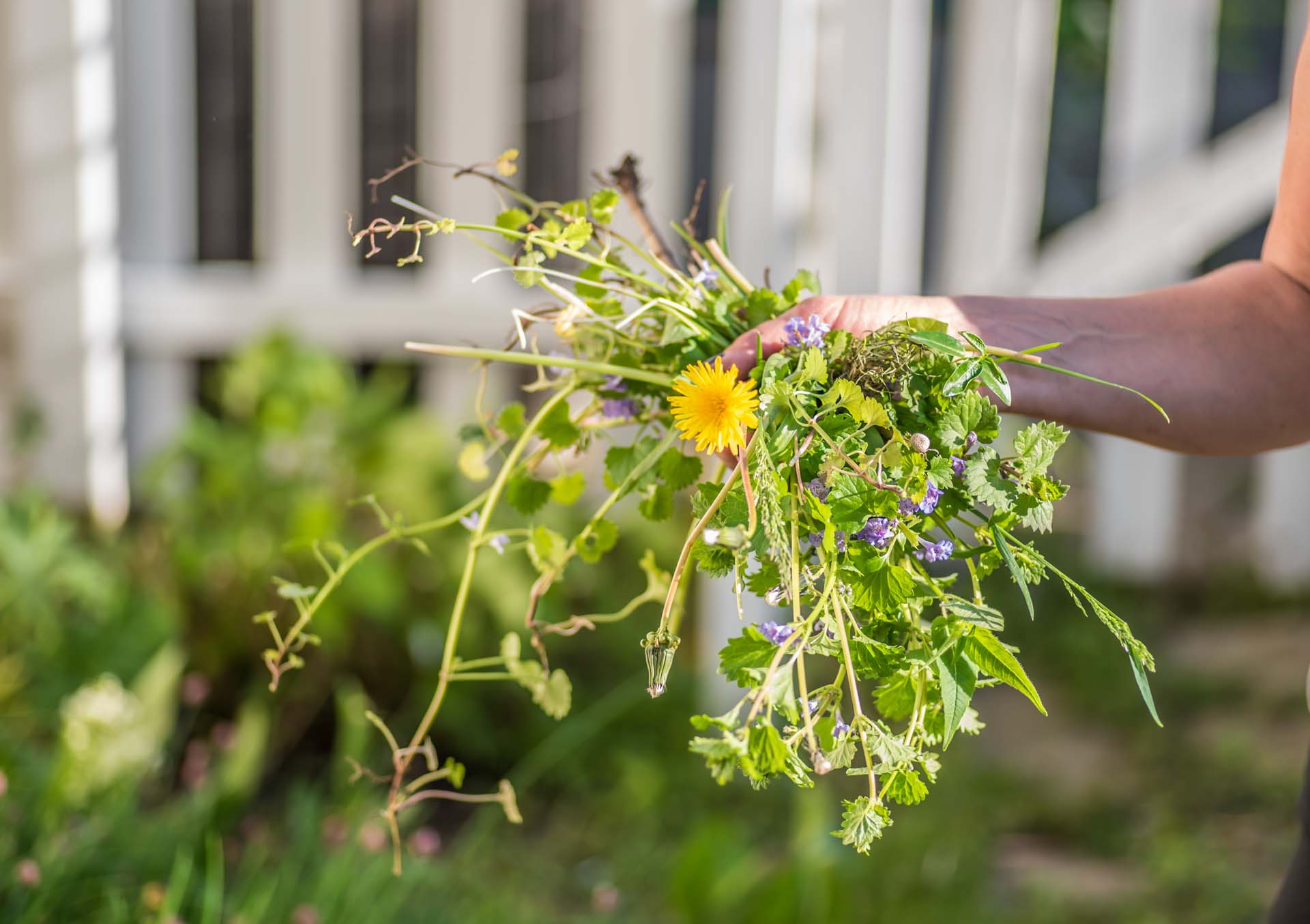
Discover ten easy ways to get rid of weeds naturally while protecting the ecosystem.
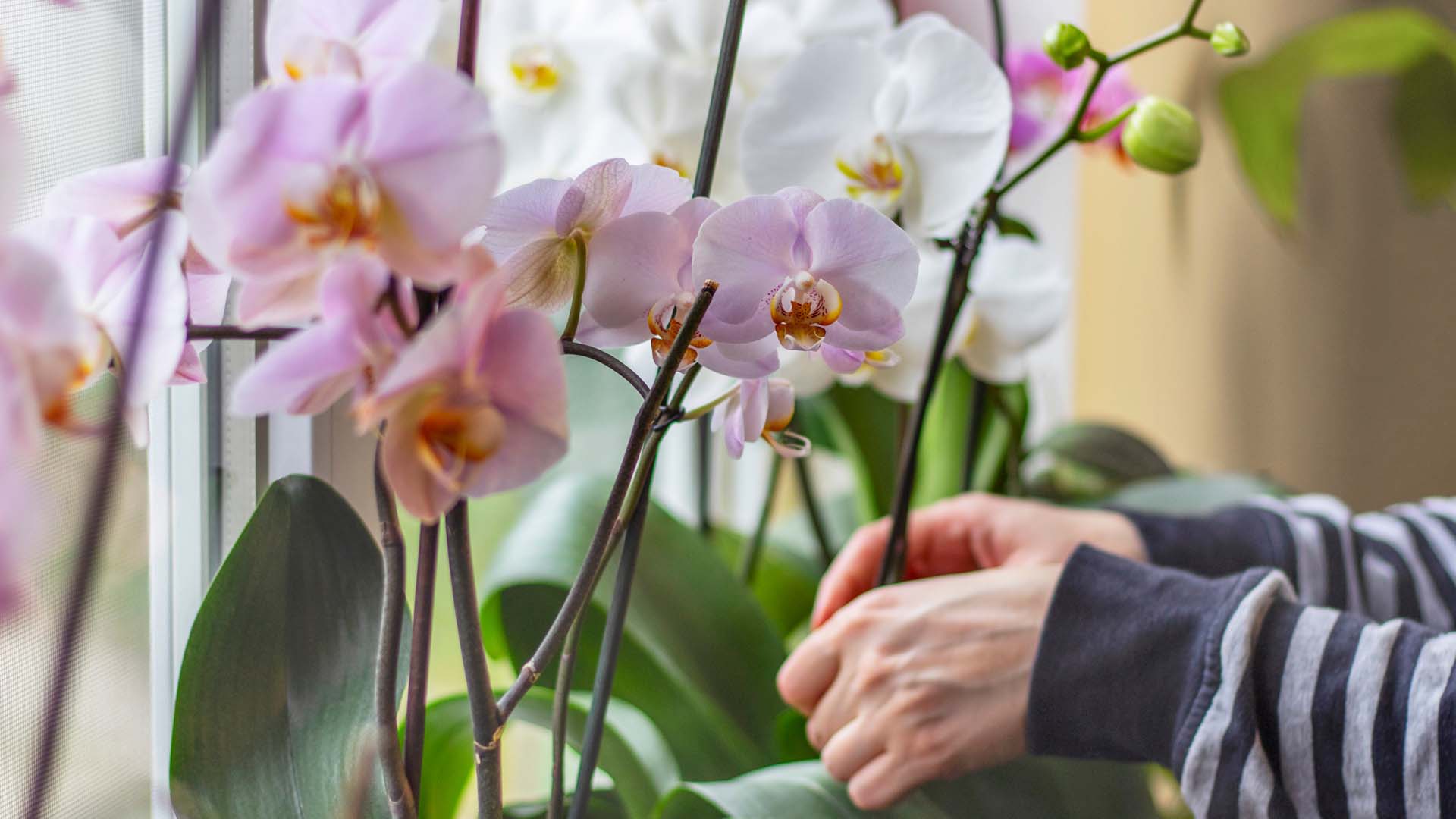
Our expert pruning and watering hacks include a top tip to keep them flowering from Alan Titchmarsh.

Blighted by buzzing? How to keep wasps out of your garden without harming them so you can enjoy the summer.



Want to know how to get rid of dandelions? Advice on how to tackle them but why they might be worth sparing.

